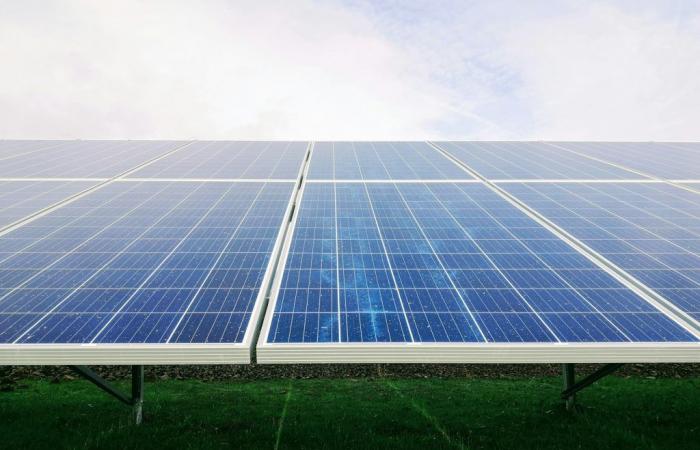In the 2030 PNIEC, Italy must reach 131 GW of RES
Reiterated the objectives on renewables and the importance of hydrogen and biomethane. The chapter on capture and storage of CO2. And introduced ex new il nuclear. These are the salient features of definitive version of the PNIEC 2030 which the Ministry of the Environment and Energy Security (MASE) sent to Brussels today, respecting the community deadline. A package of lenses assembled with “great pragmatism” which exceeds the “unrealistic approaches” of the past by putting one into play “realistic and technologically neutral”claims MASE. Rome had sent a draft of the new PNIEC to the Commission in July 2023.
“It is a Plan that we have shared with the protagonists of the transition, which does not hide the steps still necessary to fill some gaps, but focuses on the great opportunities arising from the development of all sources, without preclusions”underlines the owner of MASE, Gilberto Pichetto. “I would like to mention in particular the scenario on nuclear energy, both from fission in the medium term (starting from 2035) and from fusion (close to 2050), which allows us to look forward to a possible future”.
PNIEC 2030, FER objectives confirmed
In July 2023, Italy sent the EU a first draft of the update of the PNIEC 2030. Compared to that version, the total installed capacity of renewables at the end of the decade remains unchanged. Overall, Italy will have to reach 131 GW, of which 79.2 GW from photovoltaic, 28.1 from wind, 19.4 from hydroelectric, 3.2 GW from bioenergy and 1 GW from geothermal. On this last source, MASE specifies that the target could be raised in the event of “achieving an adequate level of maturity of some project initiatives under development”.
On the front ofenergy efficiencythe MASE claims a “important” reduction of primary and final energy consumption achieved with the measures introduced in the last 2 years, but to achieve the objectives, “raised in consideration of the growth scenario of gross domestic product”it will be necessary “keep working”. The target relating to cumulative annual savings in final consumption through mandatory efficiency schemes has instead been achieved.
Emissions above EU targets
The government also confirms its desire to exceed, in some cases, EU emissions targets. Compared to the target set by the Fit for 55 package from Brussels for greenhouse gas emissions covered by the ETS systemi.e. -62% by 2030, Italy will aim to reduce them by 66% compared to 2005 levels.
In sectors not subject to the community carbon market, however, the MASE points the finger at it “European targets still too challenging today”. Despite an improvement in indicators for some areas, the decarbonisation of buildings, transport and agriculture will require “further energy”.
Biofuels, biomethane and hydrogen
The PNIEC 2030 then includes chapters dedicated to the production of renewable fuels such as biomethane and thehydrogento the use of biofuels “which can already contribute to the decarbonisation of the existing car fleet in the short term”cited together with the spread of electric cars and the reduction of private mobility.
On hydrogen, the PNIEC also incorporates the project to develop new connections for the transport of “renewable gases”central point of the Meloni government’s plan to make Italy a European energy hub (first of all fossil gas, to be honest, although the projects under discussion are H2-ready) and a supply corridor for renewables in the Mediterranean area.
The final version of the National Integrated Energy and Climate Plan confirms the inclusion of a chapter on capture and storage of CO2absent in the first version of 2019-2020, the role of building renovations and the electrification of final consumption, to be achieved in particular through a growing weight in the renewable thermal mix of heat pumps.
Nuclear news in Italy’s National Integrated Energy and Climate Plan
The real novelty of PNIEC 2030 is the introduction of a significant role for atomic energy. The government, in fact, establishes its desire to return to nuclear power in a very short time, but by immediately starting a series of actions functional to this objective.
A specific section of the plan is dedicated to the work of the National Platform for Sustainable Nuclear Energy and to the scenario hypotheses “in which the energetic and economic convenience of having a share of nuclear production is demonstrated from a technical-scientific point of view, in synergy and in support of renewables and other forms of low-emission energy production”recites a note from the MASE.
Nuclear power which, according to these scenarios, could provide approximately 11% of the national mix in 2050, “with a possible projection towards 22%”. The emphasis here is above all on fission but the door is also left open to fusion technologies. For fission, the start-up date of the first new nuclear power plants in Italy could be around 2035.



